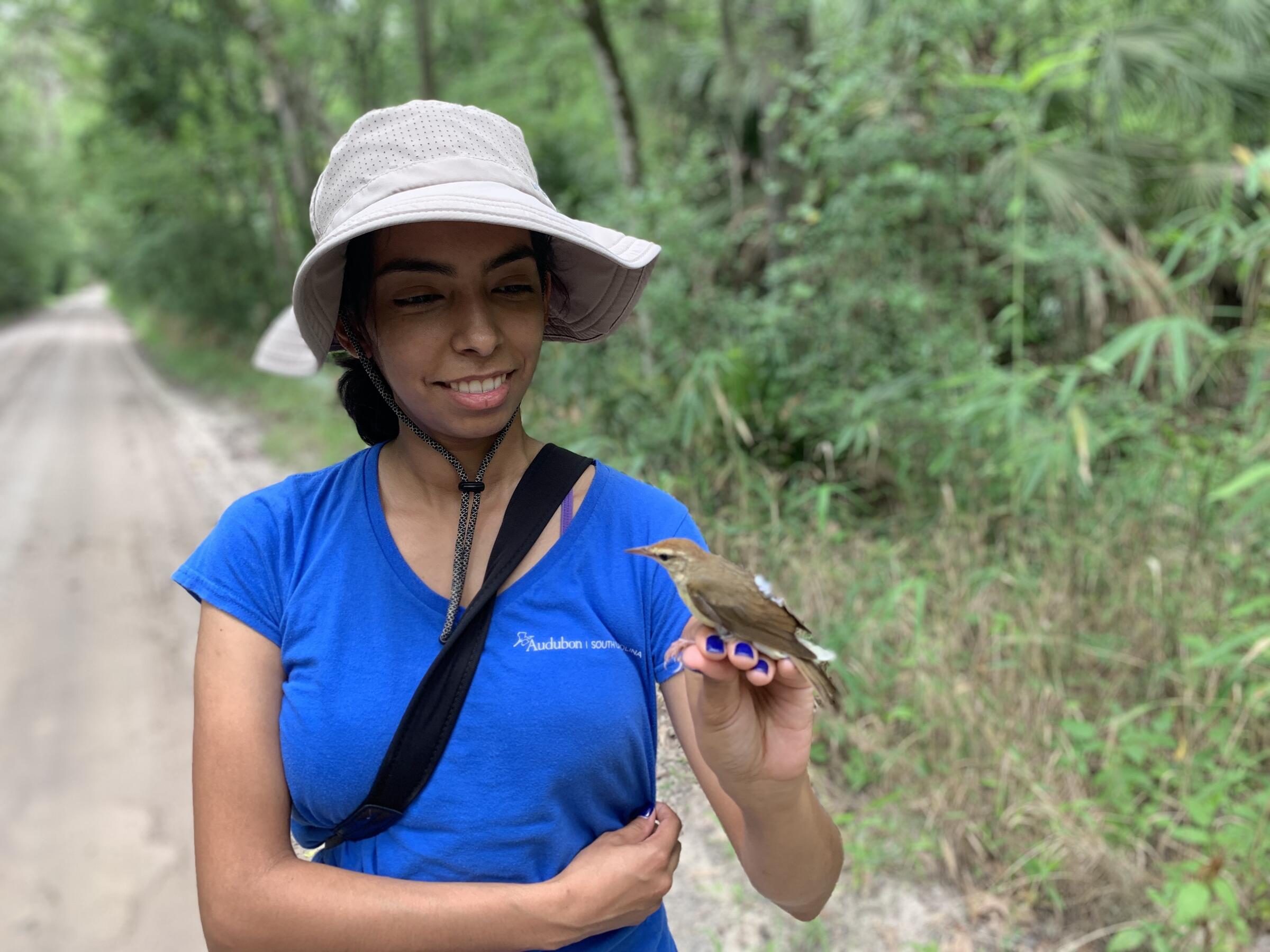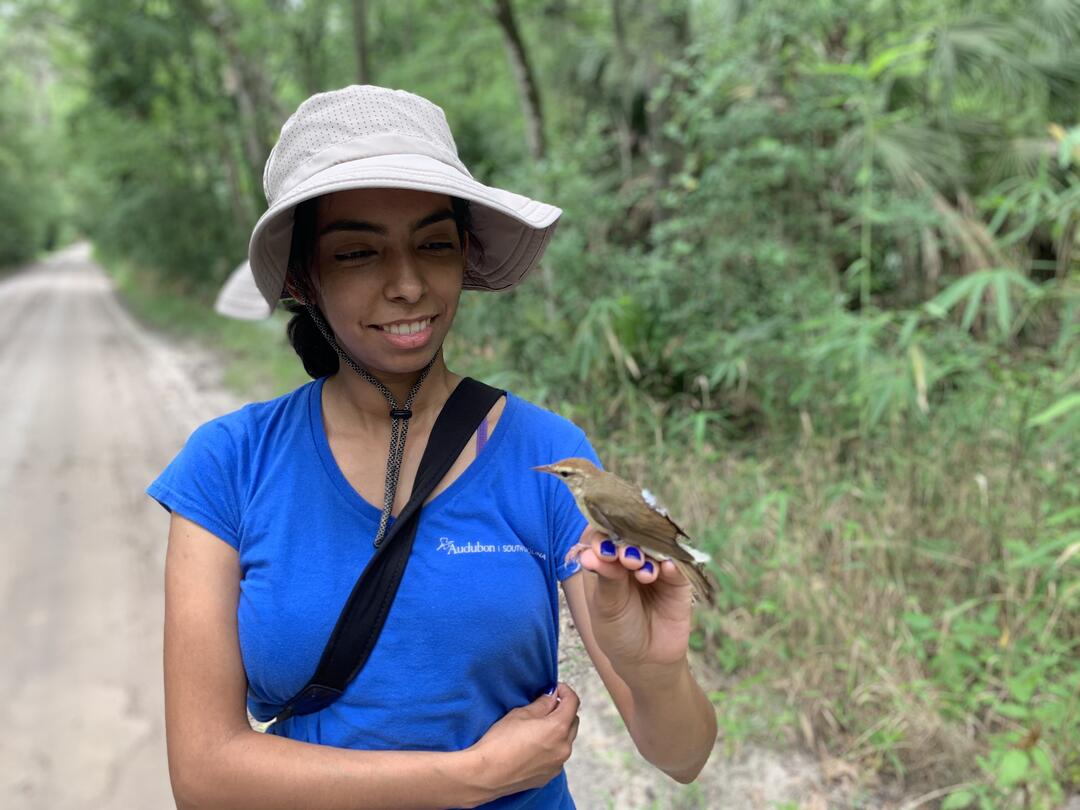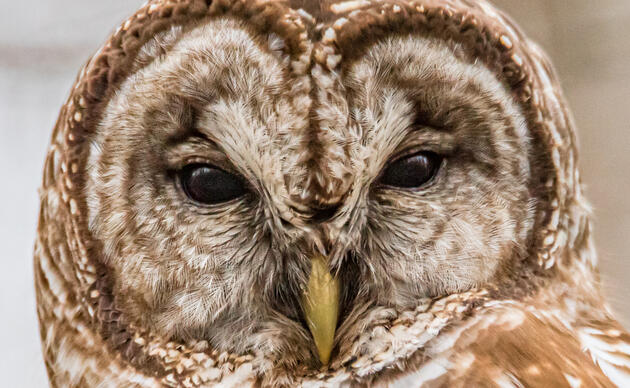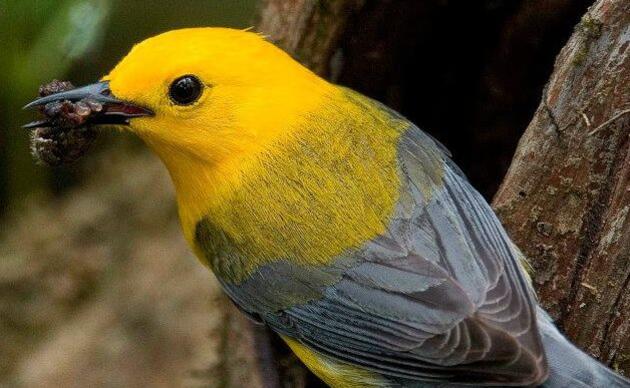My first week in South Carolina was incredible. After my redeye flight, I drove straight to Beidler Forest. I felt pretty tired but was also excited to meet my new mentors and tour the sanctuary! The boardwalk at Beidler Forest is absolutely stunning. It’s like taking a comfortable stroll through the forest and swamp without having to trudge through the mud. As we walked along some of the boardwalk, the various projects I would be working on were explained in detail. However, I couldn’t help but get a little distracted by the plethora of unfamiliar species I was hearing singing throughout the swamp. As we ended the brief tour, I got ready to take a photo for the website. Thank goodness I was able to retake this the next day after some much needed rest! Whew!
Two days later, we went on a staff canoe and kayak trip through Four Hole Swamp up to where the boardwalk is. It was fantastic. Led by Richard (Ricky) Covey, I learned so much about tupelos, snakes, and heard and saw many Prothonotary Warblers. It was an unforgettable experience that I would definitely visit to do again. All the Beidler staff have been so welcoming and helpful with some of the work for my fieldwork. For Project Protho, I have been recording and documenting the territories of the Prothonotary Warblers that are visible from or intersect with the boardwalk. This is made possible through color banding effort at this sanctuary. On the left leg, a color band representing the year is added on top of the aluminum USGS band. On the right leg, a unique color combination is added using two bands. This allows us to positively identify individuals without having to recapture them. It also allows us to give them cute nicknames for which we have been using native plant species as inspiration. The first Prothonotary Warbler I processed and color banded was last month and his nickname is Maple (for the double red color bands on his right leg). Now that most of the males that have territories along the boardwalk are banded, much of my time has been allocated to figuring out where pairs are nesting. Recently, I have been checking nest boxes suspected to be in use and keeping track of the age of the hatchlings. Prothonotary Warblers fledge 10 days after hatching and can be banded between days 5-10. While these hatchlings are not color banded, if these individuals are caught later in life, researchers will be able to accurately age them because of this effort.
Another project I have been helping with is in collaboration with Louisiana State University and several other partners. We have been helping place geolocators and nanotags on Swainson’s Warblers. The graduate student that designed the project aims to assess migratory connectivity and the essential habitats they utilize. This is made possible with the use of MOTUS Wildlife Tracking towers, one of which I helped put together at the Silver Bluff Audubon Center near Aiken, SC. I have truly enjoyed being a part of a larger conservation effort and have actualized the importance of collaboration in the accomplishment of these efforts.
In line with this idea, I have also been fortunate enough to help with the Monitoring Avian Productivity and Survivorship (MAPS) banding station at Beidler Forest. Most of the species I have seen here on the east coast have been lifers, but the excitement is taken to the next level when you get to see them up close. Some of the most exciting species that we’ve caught so far in the season include Wood Thrush, Swainson’s Warbler, Prothonotary Warbler, Painted Bunting, Red-eyed Vireo, White-eyed Vireo, and so many Hooded Warblers! The resulting data that we collect is used to estimate vital rates like productivity, recruitment, and survival of various species. It is ultimately used to better understand which life stages are most important in limiting population growth or causing declines.
I could go on and on about all the unforgettable experiences I have had here with South Carolina Audubon. However, nothing has been as fulfilling as learning how to band birds and applying these skills to nestlings, including Prothonotary Warblers and Purple Martins. I couldn’t have asked for a more knowledgeable team at Beidler Forest nor better mentorship than I have had from Jennifer Tyrrell and Matt Johnson. I have learned so much in two months and I am looking forward to what the rest of the summer has to bring. I am definitely going to have a hard time leaving, but it will certainly not be the last time I am here.
How you can help, right now
Boardwalk Tickets
We're open Wednesdays thru Saturdays 9 AM to 5 PM and
Sundays 11 AM to 4 PM.
Beidler Membership
Click here to purchase a membership, which provides free admission for a year and other benefits. We offer both Individual and Family Memberships.
Donate to Beidler Forest
If you wish to support us, please consider donating. 100% of your donation goes back into Beidler Forest.





